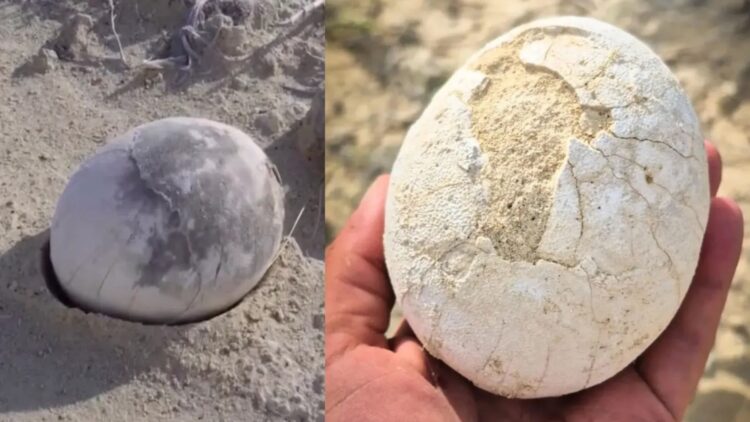Recently, a group of researchers in Río Negro (Argentina) took part in the Creatceous Expedition I. Thanks to COINET (National Council for Scientific and Technical Research), the Azara Foundation, and the National Geographic Society, Gonzalon Muñoz and his team are conducting exhaustive research on a dinosaur egg that raises many questions. This discovery represents a major advance in Argentine paleontology, which dates back to the time of José Bonaparte, who discovered the famous Carnotaurus. Read on to learn more about this great archaeological event.
The new paleontologist achievement
Three paleontologists have found a dinosaur egg in the course of an excavation in Río Negro, Argentina. The time was captured on video, which has since been shared all around the world.
The excavation took place in Argentine Patagonia—one of the most importants windows into the world before the extinction of the dinosaurs—and it belongs to the Cretaceous Expedition I, leaded by Argentina’s National Council for Scientific and Technical Research (CONICET) with help from the Azara Foundation and the National Geographic Society. It is important to highlight the great teamwork that has been carried out to shed light on questions that remain unanswered today.
The investigators’ reaction upon uncovering the egg quickly tuned into the most widely circulated aspect of the excavation.
“It was a complete and utter surprise,” said researcher Gonzalo Muñoz in an interview with National Geographic.
In addition the investigator explained that It was not common to discover the egg of a possible carnivorous dinosaur, much less in that state. Fianlly, the happiness was spectacular for the whole team. Motivation definitely grew, and thus they have continued with research and projects surrounding this historic discovery.
The reasons of why this discovery is special
Even though Patagonia is widely famous for usual fossil finds, discovering dinosaur eggs is far rare. This due to the fact that in specific those belonging to carnivorous species. Moñoz explained with all detail that they’re much more delicate eggs, with thinner shells that are more probably to be in bad conditions. . These cases make it difficult to continue investigations and mean that theories cannot be approved one hundred percent.
Even more exciting is the possibility that the egg may contain an embryo, which would make it truly exceptional. Scientists have not yet confirmed the presence of an embryo, but if preserved, it could point to the existence of an unknown lineage. Further analysis using microtomography and CT scans will be needed to uncover more details.
How it became known to the public: the big event
Another memorable notion of the find was the way it was shared with the public. The investigators live-streamed the excavation process in its entirety.
“At first, we thought people wouldn’t be interested because the materials were so small and fragile—mammal teeth, snake vertebrae—but the response was incredibly positive, full of encouraging and beautiful messages,” said Muñoz.
Argentina ranks third in the world for the number of famous dinosaur species, only behind China and the United States. This makes it one of the most relevant countries in vertebrate paleontology. The pioneering researches of José Bonaparte during the 1970s, 1980s, and 1990s was in specicifc relevant for other investigatos—he discovered and named famous dinosaurs such as Carnotaurus and trained many of today’s Argentine paleontologists, who carry forward his guiding principle: “What is found here is studied here.”
The investigators team has presented that the fossils will be moved to the Argentine Museum of Natural Sciences for study and preparation. Once that process is full done, they will be back to their home province of Río Negro, where they will be displayed at the Patagonian Museum.

